Mastering Kodachrome II: A Photographer's Guide
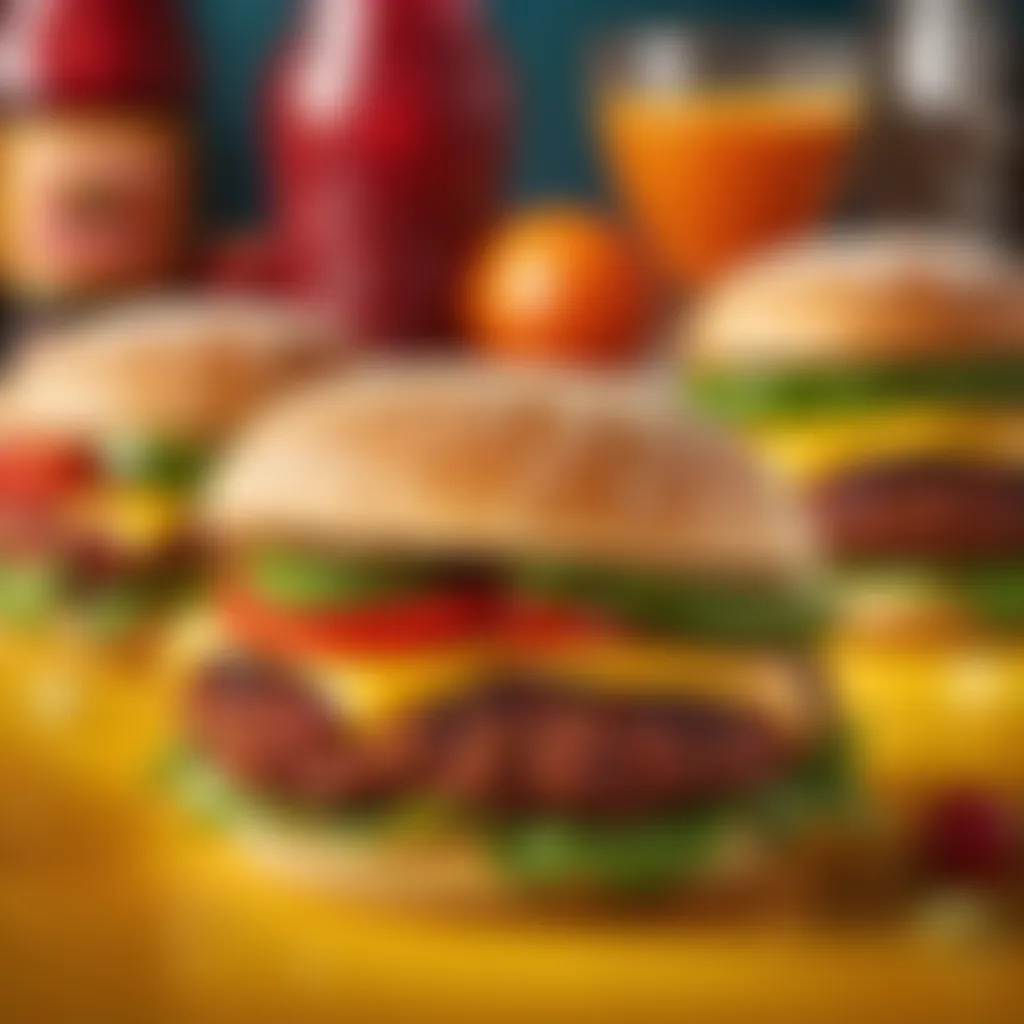

Intro
Kodachrome II is not just a film type; it embodies a rich history and a particular way of seeing the world. This vibrant film offers unique textures and colors that can transform an ordinary photograph into a piece of art. For many photographers, mastering the Kodachrome II recipe is akin to learning the alchemy of visual storytelling. In this guide, we'll walk you through the essential ingredients and steps required to create stunning Kodachrome-style images, diving deep into the technical aspects that make the process truly worthwhile.
With a blend of historical context and practical application, you will find yourself better equipped to appreciate and deploy this classic film medium in your photographic endeavors. Let’s not just snap pictures; let’s create memories that resonate with color, depth, and meaning.
Ingredients:
To embark on this photographic journey inspired by Kodachrome II, you'll require a set of precise ingredients both for the development process and for the imagery it produces:
- Color Negative Film 35mm - 1 roll
- Kodak Ektachrome Developer - 1 liter
- Blix Solution - 1 liter
- Stabilizer - 0.5 liter
- Water - 2 liters, distilled preferred
- Hydrochloric Acid - 3 ml
- Sodium Hydroxide - 5g
- Sodium Thiosulfate - 10g
Make sure you're equipped with the following essentials, as they ensure smoother execution of the recipe:
- A darkroom or any light-tight workspace
- Graduated cylinders for measuring
- Thermometer
- Plastic film containers or tanks for processing
Preparation Steps:
Step-by-Step Process
- Set Up Your Space: Ensure your darkroom is clean, organized, and free from any stray light. This will help in maintaining the integrity of images.
- Measure Your Chemicals: Using graduated cylinders, accurately measure out the Kodak Ektachrome Developer, Blix Solution, and Stabilizer. Mix each according to the specific instructions provided on the product containers.
- Prepare the Water Mixture: Combine the distilled water with hydrochloric acid and sodium hydroxide in a separate container to create a balanced solution. Stir gently.
- Temperature Check: Ensure that the chemicals are at the optimal temperature as per the manufacturer's instructions, typically around 20-25°C (68-77°F). This is crucial for achieving color consistency in your development process.
Tip: Being precise in your measurements and temperature will yield the best possible results.
Technical Aspects:
Understanding the meticulous nature of chemical reactions involved in film development is essential.
- Temperature Settings: Always maintain the developer solution at the correct temperature. Too hot or too cold can affect color saturation and image sharpness.
- Timing Specifics: Stick to the prescribed timings for each phase of development. Over- or under-exposing can lead to disastrous results.
- Critical Techniques: One important technique is inversion. Gentle inversion of your film can help to ensure even coating of the developing solution, which is vital in maintaining color integrity.
Cooking Process:
Sequential Steps
- Develop the Film: Submerge the film in the Kodak Ektachrome Developer for the recommended time, usually around 6:30 minutes. Keep an eye on the clock.
- Blix Treatment: After developing, move the film to the Blix Solution for about 3 minutes. This step will help to stabilize the colors that come through.
- Final Wash: Wash the film in running water for ten minutes to remove any residual chemicals.
- Stabilizer Dip: After washing, dip the film in the Stabilizer for about 30 seconds to protect the color.
- Drying the Film: Hang the film in a dust-free area and let it air dry completely.
Troubleshooting Tips:
Even with the best intentions, mistakes might happen. Here are common pitfalls and how to avoid them:
- If your colors appear muted, double-check your chemical temperatures; this could indicate an uneven development.
- Overexposure can lead to loss of details, so ensure you’re monitoring your timing closely.
- If streaks appear on your images, recheck your rinsing process. Insufficient washing can leave chemical residues.
In understanding and executing the art behind Kodachrome II, you are not just developing film; you are creating a legacy of imagery that is genuine and timeless.
Preamble to Kodachrome
Kodachrome II is more than just a film; it’s a pivotal piece of photography history that remarkably influenced how we capture the world around us. Understanding this unique film type is essential for any photographer aiming for high-quality images that stand the test of time.
Using Kodachrome II opens the door to vivid colors, striking contrast, and incredible detail, elements that resonate strongly in today’s photographic landscape. As you explore this section, it’s key to consider not only the practical aspects of shooting with Kodachrome II, but also its cultural significance and the artistry it encourages.
Historical Context
Historically, Kodachrome II made its debut in the early 1970s, riding high on the wave of consumer photography revolution. Unlike its predecessor, Kodachrome, which thrived on complexity and could be a bit daunting, the II version simplified the process while still offering a superbly rich color palette.
During its heyday, understanding the revolution of this film meant understanding the era of vibrant photojournalism and personal snapshots during the late 20th century. You’d find Kodachrome II in family albums, newspaper archives, and in the hands of artists who embraced the power of storytelling.
This medium not only held a place in the hearts of many but created memories that rocked the very essence of visual history. Photographers wanted to preserve moments, and Kodachrome II enabled them to do just that, allowing us to gaze into the past through its evocative hues and crisp imagery. The nostalgia it brings today is palpable; flipping through a photo album now feels like turning the pages of history, connecting generations through captured moments.
Significance of Kodachrome
What sets Kodachrome II apart from other films goes well beyond technical specifications. The significance lies in its characteristic saturation and reliability that made it a go-to choice for professionals and amateurs alike.
Photographers often raved about its ability to reproduce colors authentically, making landscapes appear richer and portraits come alive with emotion. Understanding this impact gives insight into the ongoing fascination with film photography, even amid the digital age.
Kodachrome II not only influenced how photographs were taken, but also shaped how we communicate visually. The distinct colors it produces create an emotional resonance that digital formats often struggle to replicate. It’s a film that encapsulates joy, nostalgia, and sometimes even sadness—all of which can be harnessed to create compelling visual narratives.
"A photograph can be a story, a moment frozen in time, and Kodachrome II captures it beautifully, painting with memory's palette."
Understanding the Chemistry of Kodachrome
Understanding the chemistry behind Kodachrome II is not just for lab geeks or film technicians; it’s the backbone of what makes this film so remarkable in the realm of photography. Every shot tells a story, and every color, every light, plays a pivotal role in that narrative. By grasping the chemical intricacies of Kodachrome II, photographers can maximize the potential of their images and infuse more life into their visual storytelling.
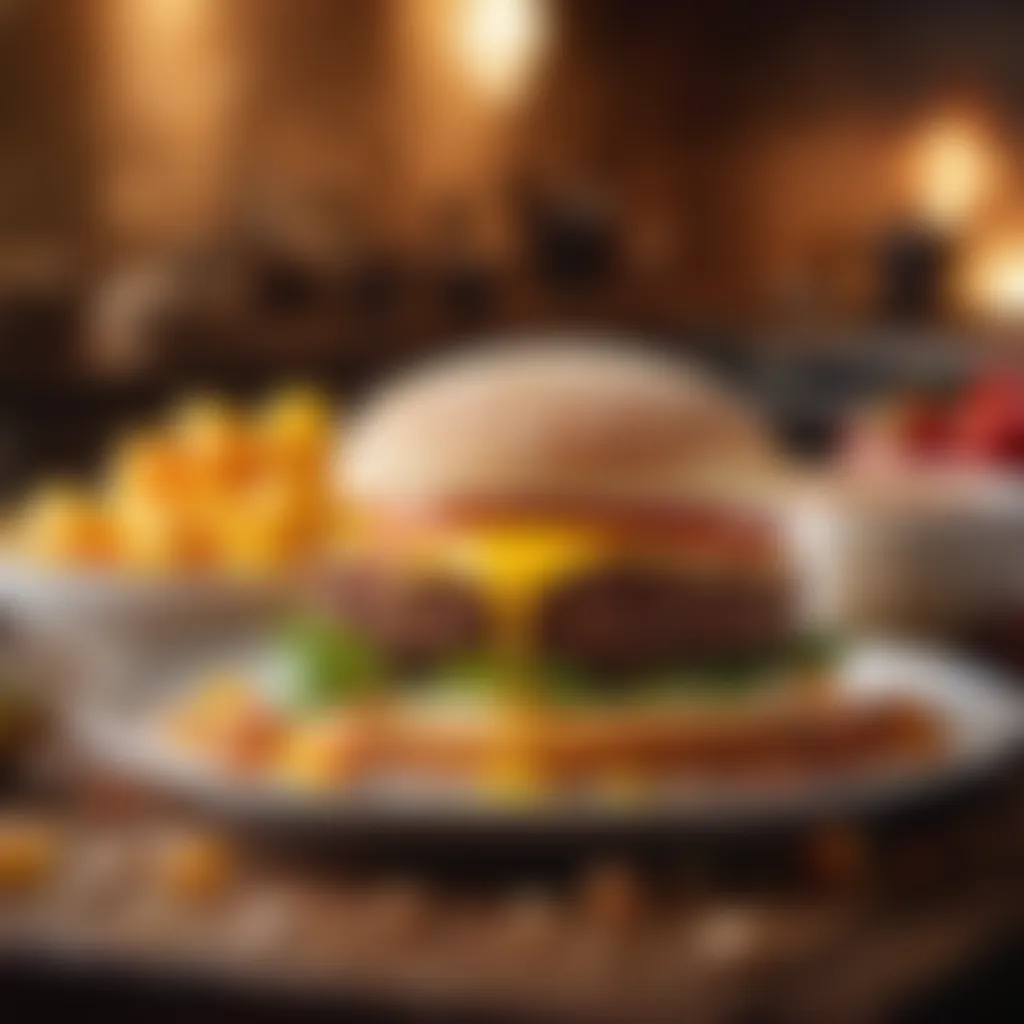
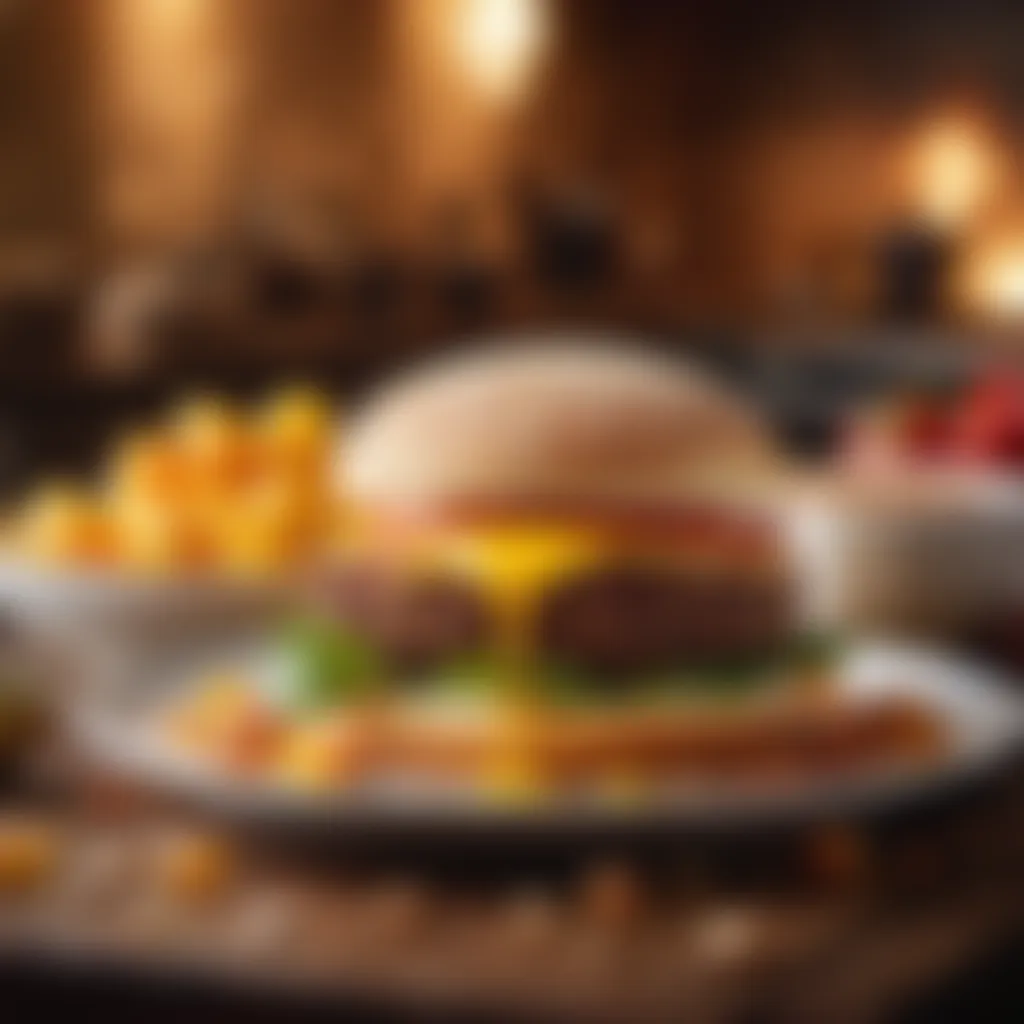
When making or developing your own Kodachrome II, knowledge about its chemical components gives you an edge, allowing you to tweak and experiment for your desired results. Moreover, grasping how the ingredients interact during development can help prevent common pitfalls that novices often fall into.
Chemical Components
Kodachrome II encompasses a set of chemical components critical to its functioning. It primarily consists of color couplers, emulsions, and various other agents that contribute to its vibrant hues and sharp contrast. The unique blend of these components is what lends the film its rich, saturated colors.
- Color Couplers: These play a vital role in forming colors during the development process. They interact with the light-sensitive silver halides in the emulsion, creating the colors that ultimately make your image pop. Each coupler corresponds to a specific primary color, allowing for intricate color reproduction.
- Emulsions: These are essentially light-sensitive layers that capture the image when exposed to light. The quality and type of emulsion used can greatly affect the outcome of your photograph—whether it leans towards a warm or cool color temperature, for instance.
By understanding these components, photographers can appreciate the depth of the medium they are working with.
Development Process
The development process for Kodachrome II is where the magic unfolds. However, it’s a detailed journey requiring patience and precision.
Pre-Development Considerations
Before one embarks on the development journey, certain considerations must be made. Film age and storage conditions are paramount; fresher film yields better quality images. The key characteristic here is ensuring everything is set before moving forward. This preemptive check ensures you won’t ruin potential masterpieces simply because the film wasn’t kept in optimal condition. If you neglect this stage, you might encounter unfavorable results, such as muted colors or unclear images.
One unique feature of this prep stage is that even small variations, like humidity or temperature during storage, can lead to different outcomes. This realization is both a benefit and a disadvantage—while it allows some level of creative expression, it also poses challenges in consistency.
Development Timeframes
Timing is crucial in the development process of Kodachrome II. Every chemical reaction follows a specific timeline, and deviating from these timeframes can yield less than pleasing results.
The key characteristic of this aspect is the balance between haste and caution. Photographers or developers can be tempted to rush through the process seeking instant gratification, but what counts here is the mantra of patience.
This unique feature allows developers to discover their personal style as they learn to better manage development timeframes. Yet, it demands the responsibility of thorough understanding—too quick may lead to underdeveloped images, and too slow can result in overdevelopment, altering colors dramatically.
Importance of Temperature Control
Temperature control is paramount in the development of Kodachrome II. Not only does it affect the chemical reaction rates, but it also plays a major role in the final quality of the image produced. The key characteristic here is consistency; maintaining the right temperature throughout the development stages is vital.
Maintaining a stable temperature can be tricky, especially for those developing at home, as fluctuations can lead to unwanted surprises in the final prints. If development takes place at higher temperatures, it may speed up the reaction process, affecting color fidelity.
Each of these components—timing and temperature—serves as the spine of the Kodachrome II development process. Learning about them enriches your ability to manipulate the when and how of producing extraordinary images.
Ultimately, grasping the chemistry of Kodachrome II not only equips you with the know-how to generate outstanding photographs, but also fosters a deeper appreciation for the artistry behind film photography.
Crafting the Perfect Kodachrome Recipe
The process of crafting the perfect Kodachrome II recipe plays a pivotal role in mastering high-quality photography. It's not just about getting the colors right but about understanding the nuanced blend of components that transform an ordinary photograph into a captivating piece of visual storytelling. This section will take you through those essential ingredients and steps that contribute immensely to achieving that striking visual appeal.
Essential Ingredients
When talking about the essential elements of a successful Kodachrome II recipe, two standout components emerge: color couplers and emulsions. These ingredients are not merely functional; they shape the very essence of the photographic experience.
The Role of Color Couplers
Color couplers are like the unsung heroes of the photograph. They play a crucial part in the film's ability to produce vibrant hues when exposed to light. Essentially, color couplers react with the silver halides during developing, leading to the formation of color images. The key characteristic of these couplers is their specificity towards certain colors. For instance, a red-sensitive coupler will react predominantly to red wavelengths, ensuring that reds appear rich and true-to-life in final images.
One major advantage of using color couplers is that they allow for rich and varied color palettes. However, they require a delicate balance; too much of a coupler can drown out subtle tones, while too little might fail to provide sufficient chromatic depth. This makes understanding and measuring these couplers critically important in achieving optimal results.
"Color couplers can make or break the vibrancy of your photograph, adding depth and life in ways that just basic chemicals cannot."
Emulsions and Their Functions
Emulsions act as the foundation upon which the film's capabilities rest. They are made from gelatin and house the light-sensitive silver halides. The unique feature of emulsions is their ability to respond to light which leads to capturing the image. The right emulsion for a film will significantly define its sensitivity and grain structure, which in turn affects the clarity and quality of the final photograph.
In the context of Kodachrome II, using high-quality emulsions contributes to a smoother grain, which many photographers seek. They help achieve a more polished photographs with a richer appearance. However, a notable disadvantage of emulsions is their vulnerability during the processing stage; if not handled carefully, they can create unwanted artifacts in the image.
Step-by-Step Instruction
Moving forward from ingredients, a detailed step-by-step guide will ensure you navigate through the Kodachrome II recipe with confidence. The preparation phase is where all the groundwork starts leading to successful photography.
Preparation Phase
The preparation phase is essentially the backbone of your recipe. Here, careful measures should be noted. It begins with accurately compiling your ingredients and ensuring that all necessary tools are at hand. Preparation serves as a checklist, ensuring that everything needed for mixing and application is readily available. The key characteristic of this phase is organization; without it, you risk fumbling through the process.
A unique advantage of a well-conducted preparation phase is that it sets the tone for the entire development process, paving the way for a smoother experience. However, if overlooked, this stage can lead to chaos and setbacks during actual mixing and application.
Mixing Specifically
Next comes the all-important stage of mixing, which transforms individual components into a working solution. Mixing specifically means following a precise formula where each ingredient is combined in a designated manner, ensuring proper reactions occur between the couplers and emulsions. This step requires focus, as the balance of each ingredient determines the outcome.
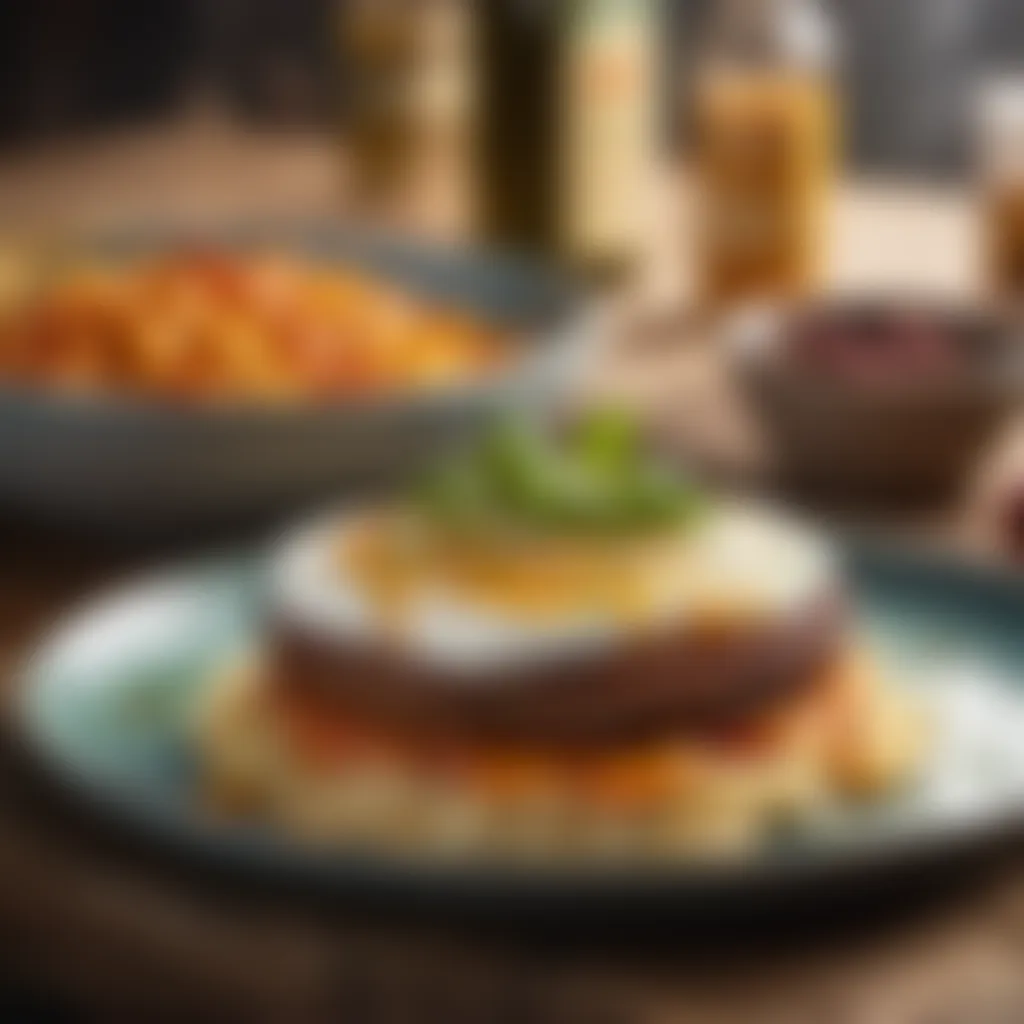
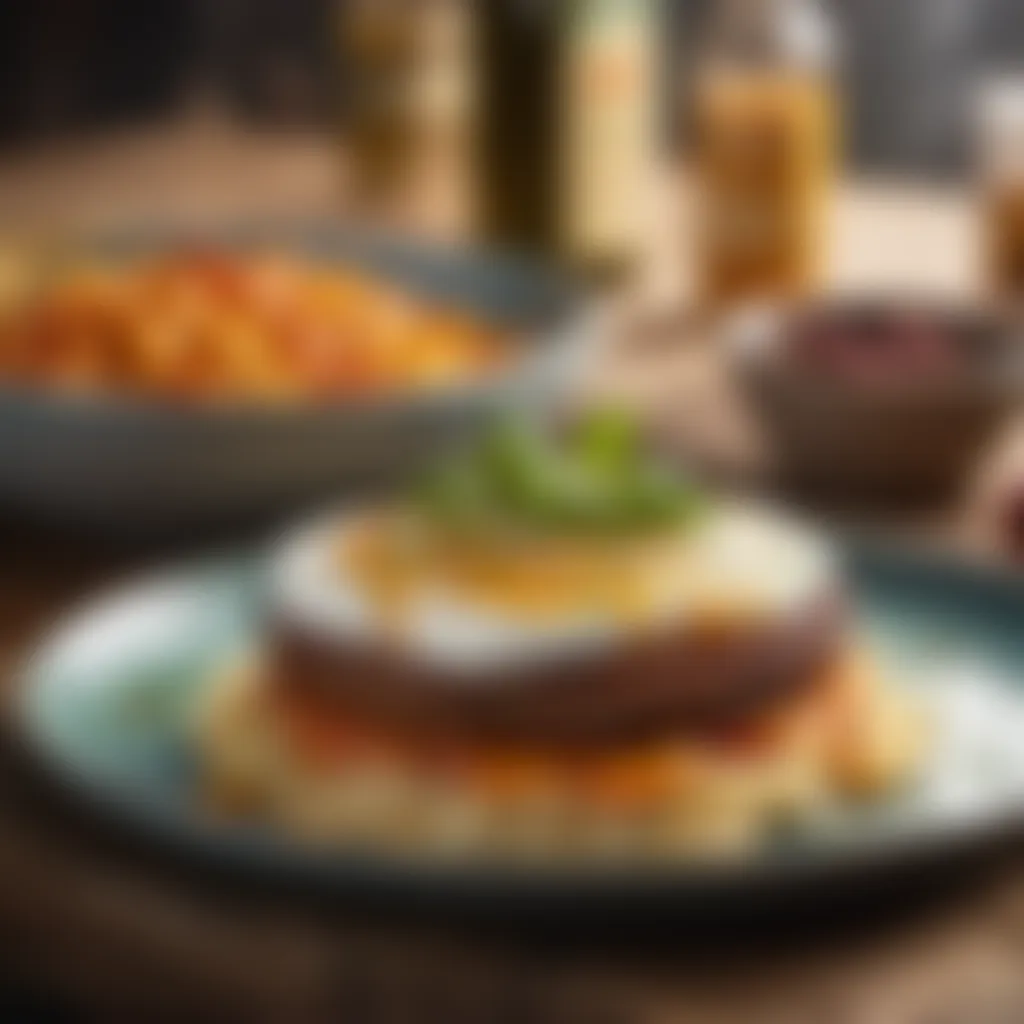
The biggest advantage of such a meticulous approach lies in the potential for consistency across your photography projects. Proper mixing can yield beautiful, predictable results each time. That said, a mistake in this process, even if minor, can throw off the entire recipe, forcing you to scrap efforts or redo the process, which can be frustrating.
Application Techniques
Finally, application techniques bring your well-crafted solution into play. This stage is where you'll utilize the mixed solution onto your film, and the finesse in application can be the difference between a good image and a stunning one. The technique you choose—be it drenching, spraying, or rolling—will greatly impact the final presentation.
Importantly, mastering application techniques aids in quality control. A consistent application ensures uniform development across the medium. However, an overzealous application may lead to uneven textures, which can compromise photographic integrity.
In the world of photography, each of these steps interlocks neatly into a series of actions that cumulatively enhance your artistic output. By focusing on these essential elements—color couplers, emulsions, preparation, mixing, and application—you genuinely empower your photography skills, reigniting your passion for Kodachrome II.
Techniques for High-Quality Photography
In the intricate dance of achieving striking photographs, the quality of your work hinges on a medley of techniques. This section serves as a compass, guiding both amateurs and seasoned photographers alike through the pivotal components that can enhance their craft.
Composition Guidelines
Composition is the backbone of any photograph. It’s not just about what’s in the frame; it’s about how the elements play with each other. A well-composed shot can transform a simple subject into a work of art. Here are some essential tips:
- Rule of Thirds: Imagine dividing your image into a grid of nine equal sections. Positioning subjects along these lines or at their intersections can create balance and interest.
- Leading Lines: Use natural lines within the scene, like roads or rivers, to draw the viewer’s eye towards the focal point.
- Framing: Incorporating elements of the scene to frame your subject can add depth. Think of branches or windows that encase your main focus.
Composition isn't set in stone; feel free to experiment and find your unique aesthetic. It’s a vital step in making your photographs not just seen but felt.
Lighting Considerations
Lighting can make or break a photograph. It’s the unwritten rule that every photographer learns, often the hard way. Here’s what you need to consider:
- Natural Light vs Artificial Light: Each has its advantages. Natural light, especially during the golden hour, can create a warm glow. In contrast, artificial lighting allows more control.
- Direction of Light: Experiment with backlighting, sidelighting, and diffused light to create different moods.
- Shadows and Highlights: Don’t shy away from the interplay between shadows and highlights in your scenes; they can add dimension and drama.
Understanding how to manipulate light is crucial to achieving that high-quality image you aim for. Remember, practice makes perfect—get out there and start snapping!
Post-Processing Tips
Post-processing can indeed elevate your photography from good to great. With the right techniques, you can refine color, enhance textures, and improve overall composition, making your photos pop.
Color Correction Techniques
Color correction is all about getting the hues just right. Often, our cameras don’t capture colors exactly as our eyes perceive them. Here’s how you can tackle it:
- White Balance Adjustment: This is essential to eliminate color casts. A too-yellow photo can be transformed into a pleasant, natural look just by adjusting the white balance.
- Exposure Correction: Sometimes you might be left with a shot that's too bright or too dark. Tools like curves or histograms can help in fine-tuning the exposure levels.
The beauty of color correction lies in its subtlety; overdoing it can result in unnatural results. A skillful hand can help maintain integrity while enhancing the image’s brilliance.
Enhancing Textures
Textures can lend a tactile quality to your photos, making them feel alive. Techniques for enhancing textures usually involve:
- Sharpening: A little sharpening can help define details, bringing out the textures in various materials, from skin to fabric.
- Contrast Adjustment: Increasing the contrast can make textures pop and create a pleasing dynamic in the image.
- Clarity and Dehaze: Using clarity helps to enhance mid-tone contrast, while dehaze can remove atmospheric haze for those landscape shots.
While enhancing textures, be cautious: overly aggressive editing can lead to loss of detail and an unrealistic outcome. Focus on producing a harmonious result that draws the viewer into the photograph.
"A photograph is a secret about a secret. The more it tells you, the less you know." – Diane Arbus
By mastering these techniques in composition, lighting, and post-processing, you set the stage for remarkable photography that captivates and inspires.
The Role of Color in Visual Storytelling
Color plays a pivotal role in photography, especially when it comes to storytelling. It’s not just a visual treat; it forms the backbone of the narrative and can evoke deep emotions. Understanding the role of color in visual storytelling can transform ordinary photographs into pieces with greater depth and resonance.
One of the intriguing aspects of color in photography is its ability to influence perceptions and emotions. When we see a vibrant ruby-red apple, it signals freshness, health, and perhaps temptation. In contrast, a muted gray setting can evoke feelings of somberness or melancholy. Each color carries its own associations, which can drastically change the message conveyed in a photograph. This is particularly essential in the context of Kodachrome II, a film known for its brilliant hues and rich textures.
Impact of Color Psychology
Color psychology dives into how colors affect human behavior and emotions. For instance, blue often evokes calmness and serenity, while yellow can stimulate cheerful feelings and energy. In Kodachrome II photography, integrating this understanding into your shots allows you to better connect with your audience.
- Red: Passion, action, love
- Green: Nature, growth, tranquility
- Blue: Trust, peace, coolness
- Yellow: Happiness, optimism, friendliness
- Black: Elegance, sophistication, mystery
By carefully choosing your color palette, you can create a mood that supports the narrative of your photographs. For instance, a street scene captured on Kodachrome II might use saturated colors to enhance the vibrancy of life within the frame, highlighting excitement or chaos, while a quiet landscape can be beautifully subdued, using softer tones to convey calm and reflection.
Creating Mood Through Color
Different colors set different moods in photography, and Kodachrome II, with its unique ability to bring colors to life, can help create an atmosphere that resonates. This can be particularly useful when telling a story through your lens. By utilizing color effectively, you can guide the viewer’s emotional journey.
Here are a few considerations for creating mood:
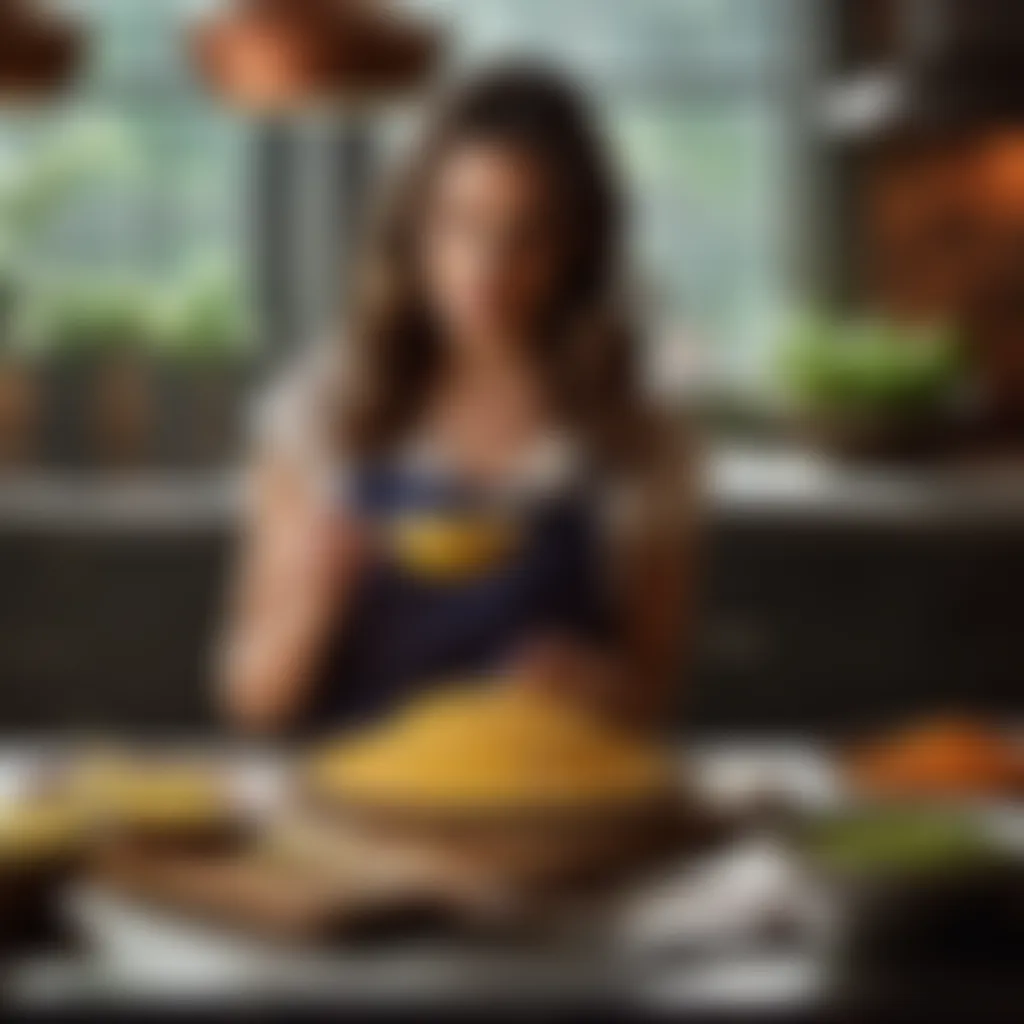
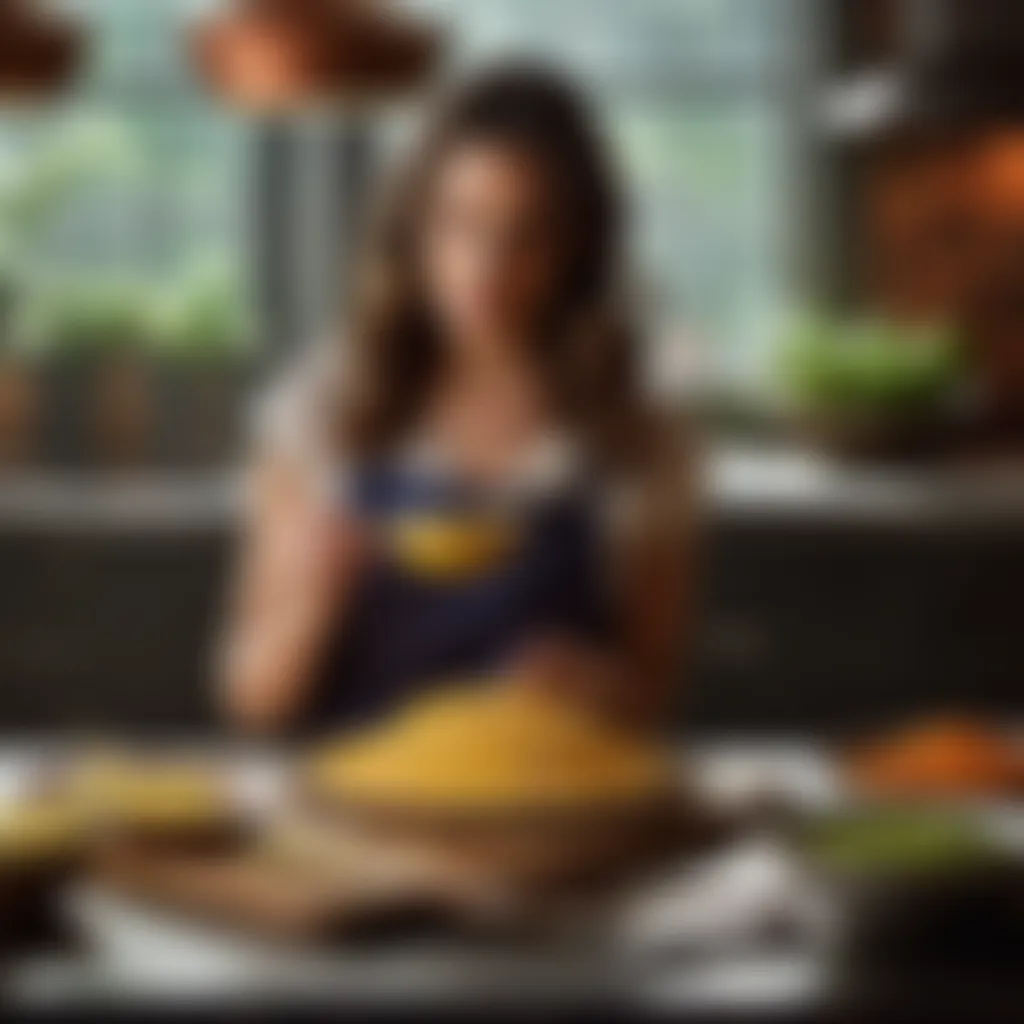
- Warm Colors: These colors (reds, oranges, yellows) often evoke warmth, energy, and vibrancy. They can be crucial for celebrating moments or capturing the feeling of warmth in a scene, like a sunset.
- Cool Colors: Blues and greens can impart a sense of calm or tranquility, which will work well for scenes aimed at relaxation or peace, such as nature photography.
- Monochrome Palettes: Using shades of a single color can produce a striking effect, offering simplicity that can draw attention to forms and textures within a photo, allowing the viewer's imagination to fill in the emotional gaps left by color.
"Color can be the first thing viewers experience, and it can shape their thoughts on what they see. It sets the tone even before they understand the story."
In summary, understanding color in photography through the Kodachrome II lens allows for a deeper exploration of not just the image, but the narrative you are trying to present. By harnessing color effectively, you can create emotionally resonant photographs that tell compelling stories.
Evaluating Kodachrome 's Impact
When we talk about photography, we often forget to assess the tools that have helped shape its vibrant landscape. This section aims to shine a spotlight on the enduring impact of Kodachrome II, a film that has not only immortalized countless images but has also paved the way for advancements in photographic technology and artistry. Evaluating its impact is crucial, as it allows us to understand how this film has influenced both artistic expression and commercial photography.
Contemporary Relevance
Kodachrome II, despite being a relic in today's digital age, holds remarkable relevance even now. Many photographers cling to its unique qualities. The film is known for its rich color saturation, which many believe is hard to replicate in digital formats. It captures subtleties in hues that provide depth and a certain "punch" to images.
Photographers today often seek this lush quality as they strive to tell their own stories through images. Often, you'll find that film enthusiasts set up dedicated forums on platforms like Reddit to share their Kodachrome experiences, discussing techniques and tips on perfecting their craft. The nostalgic value of Kodachrome also fuels its relevance. It's not simply a medium but a part of a multifaceted conversation about nostalgia in contemporary photography. People often say, "There's nothing like a film photograph to take you back in time." This emotional connection is potent and draws both professionals and hobbyists back to Kodachrome II.
Comparative Analysis with Other Films
To fully appreciate Kodachrome II, it helps to put it under the microscope alongside its contemporaries. For instance, when compared to Ektachrome, another popular film, the contrast becomes apparent. Kodachrome II is known for producing vibrant colors, especially when it comes to reds and yellows. Ektachrome, while equally competent, leans towards a cooler palette, which some photographers may find somewhat limited based on their artistic intention.
Furthermore, black-and-white films present an entirely different type of storytelling, often focusing on forms and shadows rather than color. While black-and-white photography has its own charm, the punchy colors of Kodachrome II present a different set of opportunities for visual narration.
In a nutshell, assessing the impact of Kodachrome II involves understanding where it stands in the broader spectrum of photographic film. Here is a quick comparison that highlights various attributes:
- Kodachrome II
- Ektachrome
- Black-and-White Films
- Rich color saturation
- Superior tonal range
- Vibrant reds and yellows
- Accurate color representation
- Cooler palette
- Good for subjects with subtle tones
- Focus on forms and textures
- Unique character through monochrome images
As we delve deeper into the world of photography, let's not forget that films like Kodachrome II played significant roles in shaping our understanding of color, mood, and narrative in visuals. Mastering the art of photography involves not only knowing how to use these mediums effectively but also understanding their impact and history.
"The world is but a canvas to our imagination."
- Henry David Thoreau
By highlighting these elements, we not only appreciate what Kodachrome II brought into our lives but also understand its continuous influence on modern-day storytelling through images.
Mastering the Art of Photography with Kodachrome
Getting a handle on Kodachrome II is like learning to dance in a waltz; it demands finesse, patience, and an appreciation of the subtler elements that truly make a photograph move. This section dives into how to make your photography stand out, capitalizing on what makes Kodachrome II not just a film type, but an artistic tool capable of expressing profound narratives.
With its vibrant color saturation and impressive ability to hold detail in both highlights and shadows, Kodachrome II beckons photographers to explore and experiment. It’s not just about capturing an image, but about crafting a story where texture, color, and light come together in harmony. Such understanding can transform a basic snapshot into a lasting masterpiece. Moreover, mastering Kodachrome II calls for consideration of individual styles, allowing you to refine your creative voice.
Personalizing Your Approach
When using Kodachrome II, photographers should prioritize personal expression over technical perfection. For instance, one might focus on the broader emotional hues of a serene landscape at dusk, rather than trying to achieve an overly sharp image. Achieving personal touch requires taking an introspective glance at what resonates with you as a photographer. Here are a few ways to make it your own:
- Choose Your Subject Wisely: Select subjects that you feel a connection to. Whether it's a bustling market scene, your garden blooming with wildflowers, or your children playing, these subjects will shine through the lens with authenticity.
- Experiment with Exposure: Play around with exposure settings. Sometimes a bit of underexposing can create a unique look that enhances the film's inherent color properties.
- Consider Composition: Familiarize yourself with rules of thirds, leading lines, and other compositional techniques but don’t hesitate to break them when it feels right. Kodachrome II can make even the unconventional look striking.
Exploring Diverse Subjects
The versatility of Kodachrome II allows for an exploration of various subjects, each presenting unique opportunities for narrative. From landscapes and portraits to architecture and abstract shots, here’s how to proceed:
- Landscapes: This is where Kodachrome II shines the most due to its superb color reproduction. Capture the changing hues of dawn or the rich greens of a forest after rain.
- Portraits: You may find that Kodachrome II beautifully captures skin tones, providing an organic, warm feel to your subjects. Pay attention to lighting, aiming for soft and diffused sources to reduce harsh shadows.
- Street Photography: Everyday moments come alive with this film. Capture genuine expressions, perhaps a child playing in a puddle or an elderly couple sharing a quiet moment. Each shot can tell a story that reflects the vibrancy of life.
A quote to ponder: "Photography is all about capturing moments that represent life, and Kodachrome II gives those moments a life of their own."
In the journey of grasping Kodachrome II, embrace the uniqueness of your perspective. Every photo can tell a personal story—don’t shy away from expressing what you feel. Your genuine experiences through this film will bring depth to the art form, not just for you, but for everyone who views your work.
Finale: The Enduring Legacy of Kodachrome
As we step back and consider the vast landscape of photography, we find that Kodachrome II holds a pivotal place in this narrative. Its legacy is intertwined with not just the technical aspects of light and film but also the emotional connections people have with their images. The vibrant color rendition and unique textures produced by this film have left an indelible mark on both amateur and professional photographers alike.
Reflection on its Evolution
From its inception to its discontinuation, Kodachrome II has undergone numerous transformations. It once embodied the best of what photography could offer in terms of color depth and longevity. Originally released in the mid-20th century, it revolutionized the way we perceived and captured moments as they unfolded. The gradual adoption of digital photography might have overshadowed Kodachrome's tangible charm, yet many still treasure those film days. The meticulous development process required for Kodachrome served as a ritual, fostering a deeper relationship between the photographer and their work.
For those who committed to learning the intricacies of this film, it was not merely a means to an end but an immersive experience that taught patience and precision. The gradual fading of its popularity feels akin to the loss of an old friend, yet it continues to evoke nostalgia for honest, vibrant storytelling through imagery. Interestingly, the return of analog practices has brought Kodachrome back into discussions, hinting at a renaissance driven by those seeking authenticity in their visuals.
"The photography taken on Kodachrome, they aren’t just pictures—they’re a slice of life, a moment preserved in stunning hues."
Future Perspectives in Photography
Looking ahead, it is evident that the legacy of Kodachrome II will continue to inspire future generations of photographers. The current revival of interest in film photography points towards a yearning for a tangible connection to the art form. With the digital realm overflowing with options, many are resuming a quest for texture and substance, attributes that Kodachrome II epitomizes.
Moreover, advancements in technology are making it possible to hybridize the best of both worlds. Imagine using digital tools that replicate the distinct qualities of Kodachrome while allowing photographers to maintain the immediacy of modern imaging. Innovations in chemical processing techniques could also revive interest in home development, rekindling the bond between the artist and their medium.







